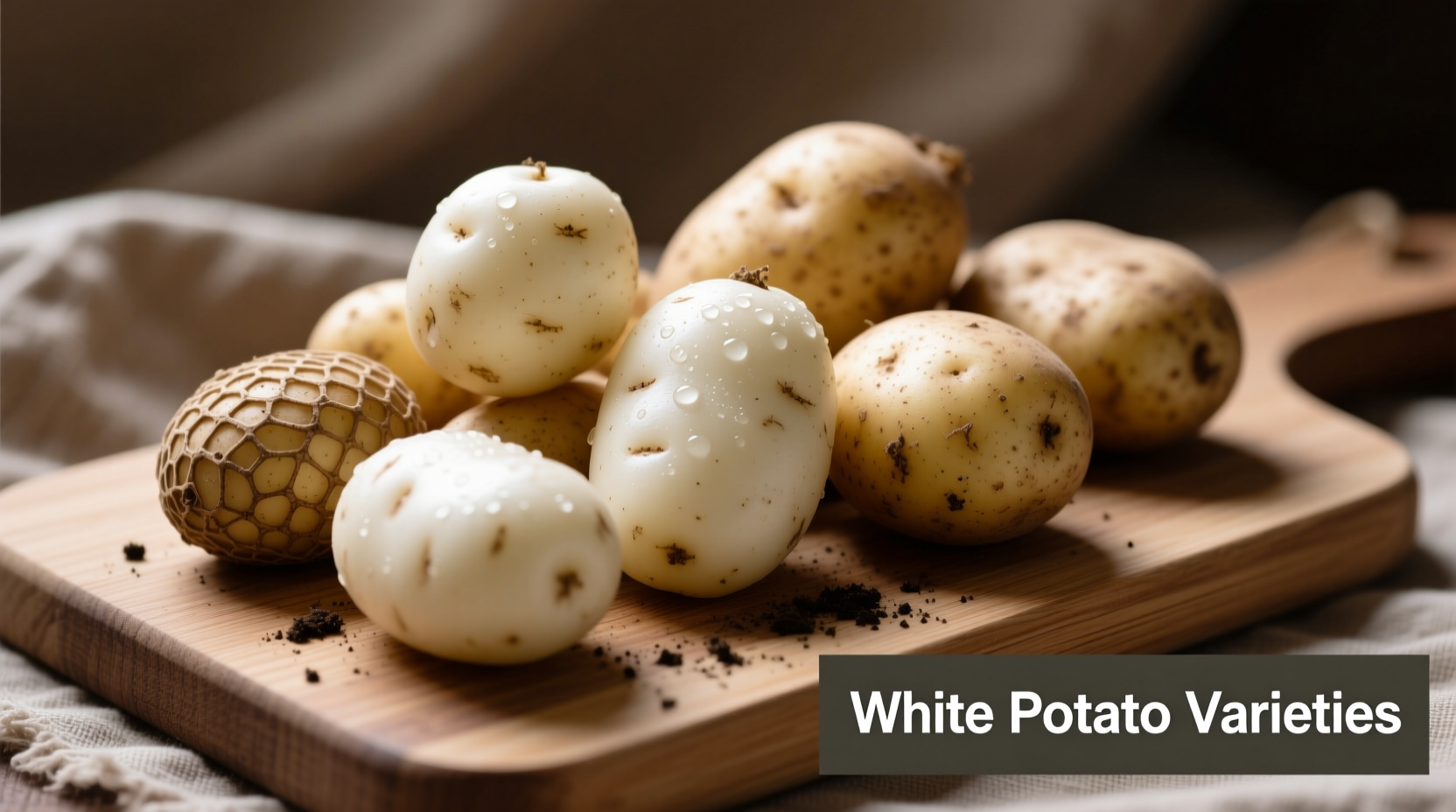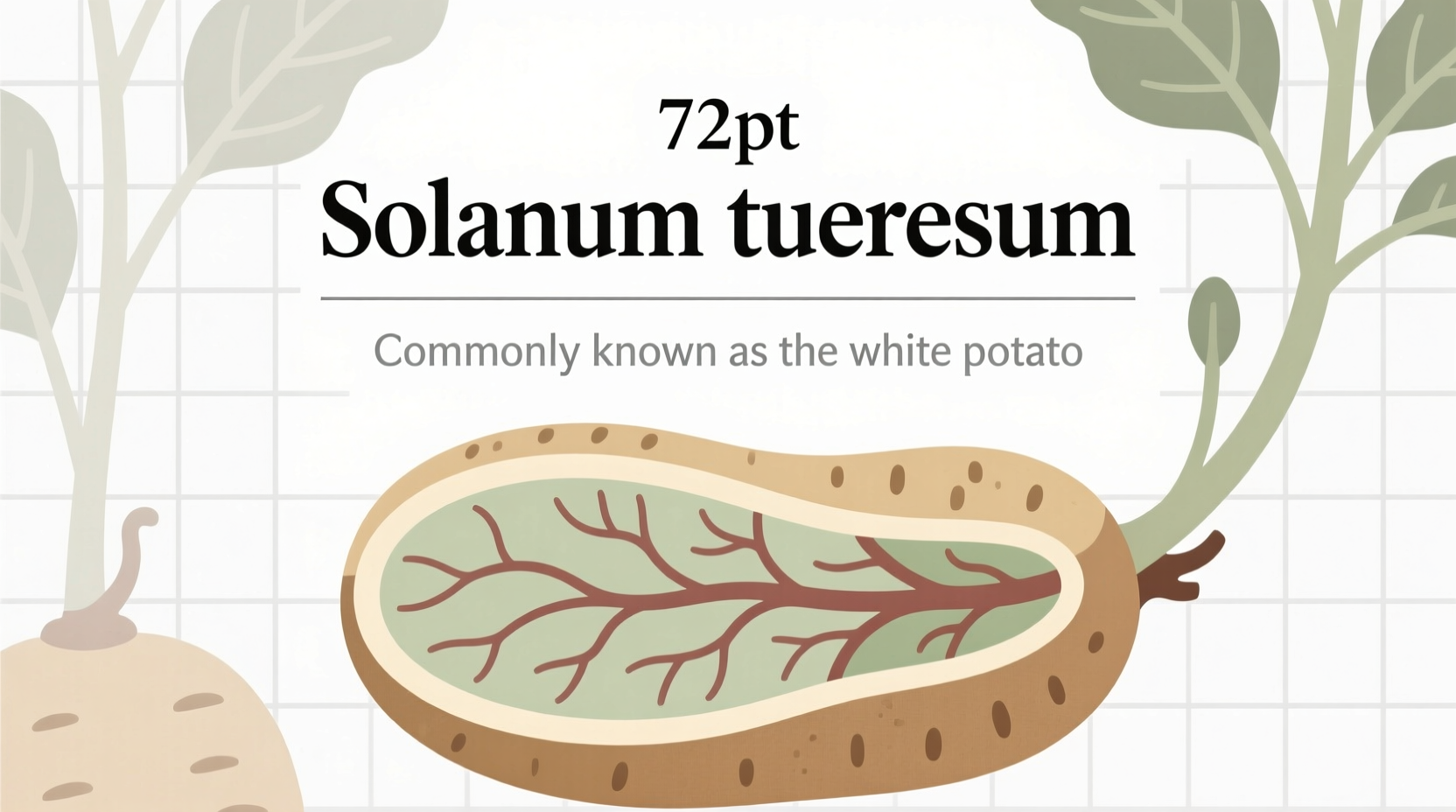Understanding the precise botanical identity of your ingredients matters more than you might think. Whether you're a home gardener selecting seed potatoes, a chef verifying ingredient authenticity, or a student researching plant biology, knowing that Solanum tuberosum represents all white potato varieties provides crucial clarity in communication and research.
Why Scientific Names Eliminate Confusion
Common names like "white potato" vary significantly by region and language, creating potential misunderstandings. While grocery stores might label certain varieties as "white potatoes," botanically they all belong to the same species. The scientific naming system, established by Carl Linnaeus in the 18th century, provides a universal language that transcends regional terminology.
Consider this historical context: When Spanish explorers brought potatoes from South America to Europe in the 16th century, confusion arose because different regions used different local names. The adoption of Solanum tuberosum as the official botanical name in 1753 created standardization that continues to benefit agricultural science today.
Botanical Classification Explained
The potato's complete taxonomic classification reveals its biological relationships:
| Taxonomic Rank | Classification | Significance |
|---|---|---|
| Kingdom | Plantae | All plants |
| Clade | Tracheophytes | Vascular plants |
| Clade | Angiosperms | Flowering plants |
| Clade | Eudicots | True dicotyledons |
| Clade | Asterids | One of major flowering plant groups |
| Order | Solanales | Nightshade order |
| Family | Solanaceae | Nightshade family (includes tomatoes, peppers, eggplants) |
| Genus | Solanum | Includes approximately 1,500 species |
| Species | tuberosum | The cultivated potato |
The genus name Solanum comes from a Latin word meaning "to soothe," possibly referring to the plant's historical medicinal uses, while tuberosum describes the tuberous nature of its edible portion. This precise naming helps distinguish true potatoes from other tuberous plants like sweet potatoes (Ipomoea batatas), which belong to a completely different plant family.

White Potato Varieties and Their Characteristics
While all white potatoes share the scientific name Solanum tuberosum, they fall into different market classes based on physical characteristics and culinary properties. Understanding these distinctions helps gardeners and cooks select the right variety for their needs:
- Round White Potatoes (Kennebec, Superior) - Medium starch content, versatile for boiling, mashing, and frying
- Long White Potatoes (White Rose, Atlantic) - Higher starch content, ideal for french fries and chips
- Yellow-Fleshed Varieties (Yukon Gold) - Often mistaken for white potatoes, these have a buttery flavor and medium starch content
The USDA Agricultural Research Service maintains the Potato Genebank, which catalogs over 8,000 potato varieties worldwide. This resource helps preserve genetic diversity while providing accurate taxonomic information for researchers and agricultural professionals.
Practical Applications of Knowing the Scientific Name
For home gardeners, using the correct scientific name prevents costly mistakes. Some garden centers might sell "Irish potatoes" (which aren't from Ireland) or confuse potatoes with other tubers. When ordering seed potatoes online, specifying Solanum tuberosum ensures you receive true potato varieties rather than sweet potatoes or other look-alikes.
Chefs benefit from understanding that all white potatoes share the same botanical identity despite different culinary properties. This knowledge helps in recipe development and ingredient substitution. For example, knowing that Yukon Golds (Solanum tuberosum 'Yukon Gold') have a different starch profile than Russets (Solanum tuberosum 'Russet Burbank') explains why they perform differently in various cooking applications.
Researchers rely on precise nomenclature when studying potato diseases, breeding programs, or nutritional content. The International Potato Center (CIP) in Peru, a CGIAR research center, uses Solanum tuberosum as the standard reference in all their scientific publications about potato cultivation and improvement.
Common Misconceptions Clarified
Many people confuse white potatoes with sweet potatoes, but they're botanically unrelated. Sweet potatoes belong to the morning glory family (Convolvulaceae) with the scientific name Ipomoea batatas. This distinction matters because:
- They have different nutritional profiles
- They're affected by different pests and diseases
- They require different growing conditions
Another common error involves the term "Irish potato." Despite the name, potatoes originated in South America and weren't grown in Ireland until the 16th century. The name developed because Ireland became a major producer and consumer of potatoes in the 18th and 19th centuries.
When Scientific Names Matter Most
Knowing the precise botanical identity becomes critical in specific situations:
- Gardening in regulated areas - Some regions restrict potato varieties due to disease concerns
- Academic research - Precise nomenclature is essential for scientific accuracy
- Food labeling compliance - Commercial products must use correct botanical terms
- Allergy information - People with nightshade allergies need to recognize Solanum family members
The Royal Horticultural Society emphasizes that using scientific names prevents confusion in plant identification, particularly important when dealing with plants in the Solanaceae family, which includes both edible crops and toxic species.
Frequently Asked Questions
Is there a difference between the scientific name of white potatoes and other potato colors?
No, all cultivated potato varieties regardless of skin or flesh color share the same scientific name Solanum tuberosum. Color variations represent different cultivars within this single species, not distinct botanical classifications.
Why do potatoes have a scientific name when we already have common names?
Scientific names provide universal identification that transcends language and regional variations. While "white potato" might mean different varieties in different countries, Solanum tuberosum refers to the same biological entity worldwide, ensuring clear communication among scientists, farmers, and gardeners globally.
Are sweet potatoes and white potatoes closely related?
No, they're not closely related. White potatoes (Solanum tuberosum) belong to the nightshade family (Solanaceae), while sweet potatoes (Ipomoea batatas) are in the morning glory family (Convolvulaceae). They evolved separately and have different genetic makeup, despite both producing edible tubers.
Can I use the scientific name when buying seed potatoes?
While most seed potato suppliers use common variety names, using Solanum tuberosum when researching can help verify you're getting true potato varieties. For specific cultivars, you'd use the full designation like Solanum tuberosum 'Kennebec'. This is particularly helpful when ordering from international suppliers where common names might differ.











 浙公网安备
33010002000092号
浙公网安备
33010002000092号 浙B2-20120091-4
浙B2-20120091-4